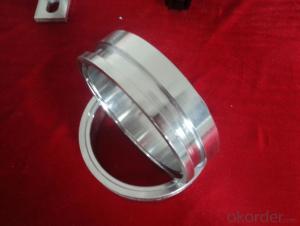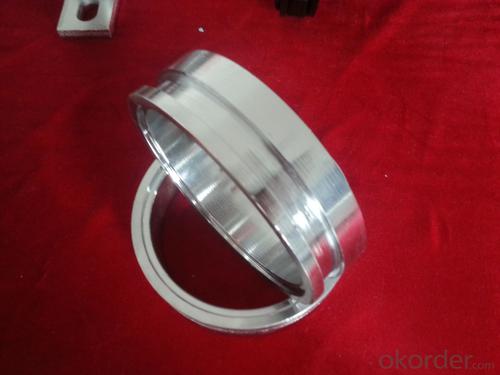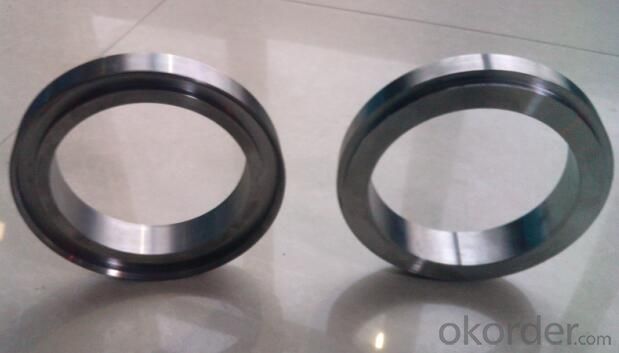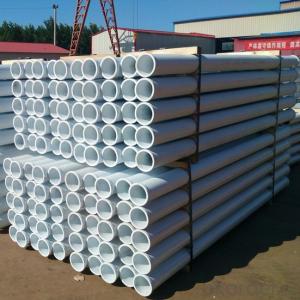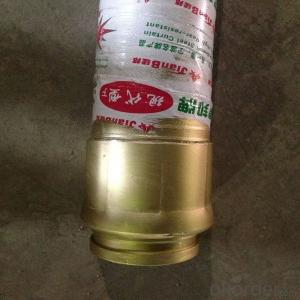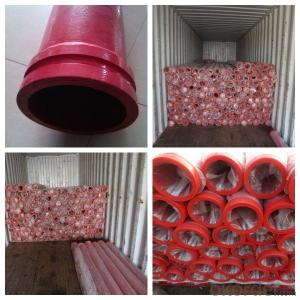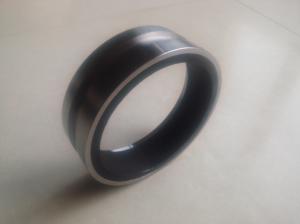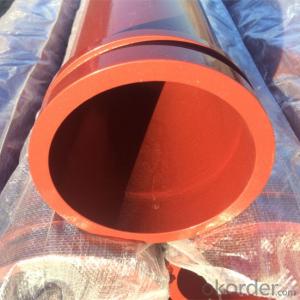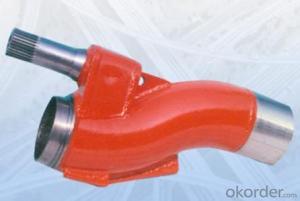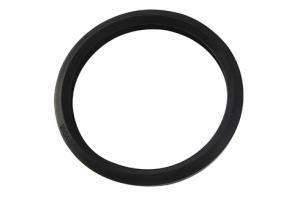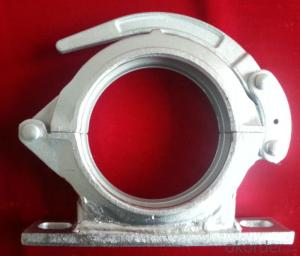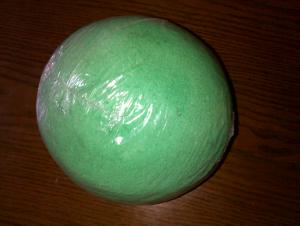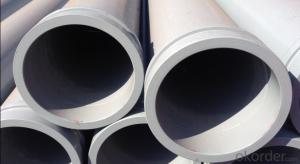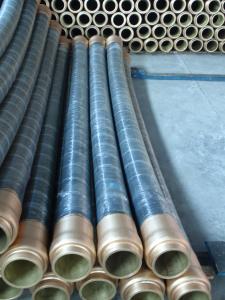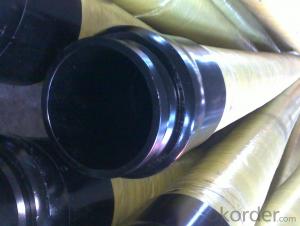Concrete Pump Flange SK
- Loading Port:
- China main port
- Payment Terms:
- TT OR LC
- Min Order Qty:
- 100 PCS
- Supply Capability:
- 10000 PCS/month
OKorder Service Pledge
OKorder Financial Service
You Might Also Like
Product Description:
A flance is a device used to connect two delivery pieps together at their ends for the purpose of transmitting, and prevent the concrete from leaking.
Main Product Features:
1. Use high quality steel.
2.convenient to use, easy operation,and high safety.
3.wear-resising,longer service life.
4.used in concrete pump truck,concrete pump and pipeline connection seal in construction
work equipment.
Product Specifications:
1.Forged
2.2--8 inch
3.Galvanizing/Baking varnish
4.More durable,light,beautiful
Production steps:
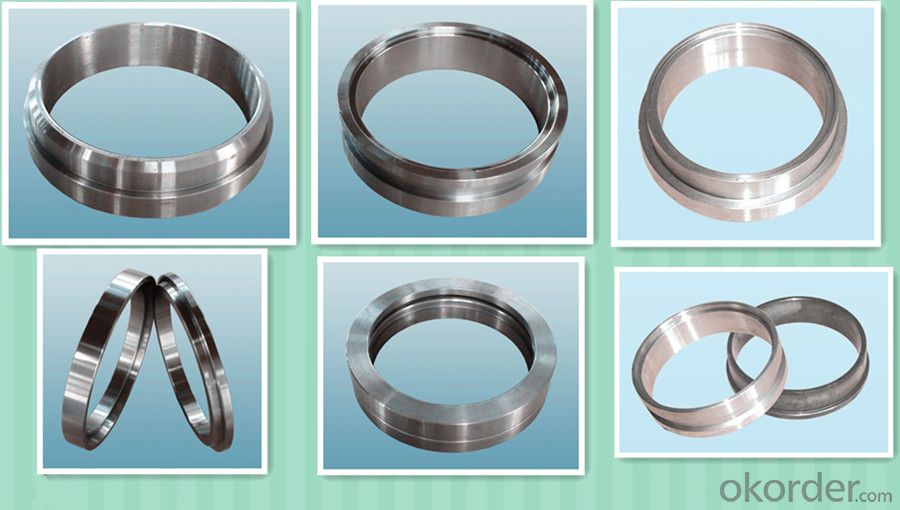
FAQ
1.How do you regarding your product quality?
As our principle is more safety to save more. In China, there are lots of manufactures of this line, but we are the first one that use the forging technic in producing, firmly meet the PM standard.
2.Can I get some samples?
Of course you can. Small sample for free, but you pay the express. For some products are not small, like concrete pump pipe, it’s very difficult to deliver one pipe of 3000mm. If it’s possible, we’d like that you can come here to visit our factory. Welcome!
3. I want to make our logo on the products, is that ok?
Yes, it’s totally ok. OME is available from us.What you should do is send your logo, brand name, or picture to us. And let other things leave on us.
- Q: Are there any specific guidelines for the installation of wear plates or wear rings in concrete pump spare parts?
- Yes, there are specific guidelines for the installation of wear plates or wear rings in concrete pump spare parts. These guidelines typically include ensuring proper alignment and fit, using the correct torque specifications for fasteners, and applying appropriate lubrication. It is important to follow these guidelines to ensure optimal performance and longevity of the wear parts.
- Q: Can concrete pump spare parts be resold or traded in for new parts?
- It is possible to resell or trade in concrete pump spare parts for new ones. The viability of reselling them depends on the condition and demand for the parts. There are different platforms, both online and offline, where individuals or businesses can sell their used spare parts. Moreover, some manufacturers or distributors may have trade-in programs that allow customers to exchange old parts for new ones, offering a cost-effective way to upgrade their equipment. However, the resale value or trade-in options may differ based on factors like the age, condition, and market demand for the specific parts.
- Q: What are the indications of a faulty control lever?
- There are several indications that can suggest a faulty control lever. First and foremost, if the control lever is not responding or is sluggish when you try to engage or disengage a specific function, it could be a sign of a problem. This could include difficulty shifting gears, adjusting speed, or operating various controls such as the throttle or clutch. Another indication of a faulty control lever is if it becomes loose or wobbly. If you notice excessive play or movement in the lever, it could indicate that the mechanism connecting the lever to the control system is worn out or damaged. This can compromise the accuracy and precision of the control lever, making it difficult to operate the intended functions effectively. Additionally, unusual noises or vibrations coming from the control lever can be a sign of a fault. This could be a result of loose or broken components within the control lever assembly, indicating that it needs to be inspected and repaired. Lastly, if the control lever becomes stuck or jammed in a certain position, it is a clear sign of a faulty lever. This can prevent you from properly controlling the equipment or vehicle, posing safety risks. In any case, if you suspect a faulty control lever, it is essential to have it inspected and repaired by a qualified technician to ensure proper functioning and safe operation.
- Q: What is the difference between concrete pump and ground pump?
- Ground pump only conveying function, the price is cheaper, and now are used to transport mixing machine, the ground pump is a bit uneconomical
- Q: Can I get spare parts for both concrete pumps with and without pressure washers?
- Yes, spare parts are available for both concrete pumps with and without pressure washers.
- Q: What is the function of a concrete pump control lever?
- The function of a concrete pump control lever is to control the flow and direction of the concrete being pumped. It allows the operator to start and stop the pump, adjust the speed of the pump, and control the placement and placement speed of the concrete. The control lever also enables the operator to switch between different pumping modes, such as pumping vertically or horizontally, and adjust the pressure of the concrete being pumped. Overall, the control lever is essential in ensuring accurate and efficient concrete pumping operations.
- Q: How can a faulty concrete pump S valve affect the concrete flow?
- A faulty concrete pump S valve can affect the concrete flow by causing disruptions, blockages, or uneven distribution of the concrete. The S valve is responsible for controlling the direction of the concrete flow, and when it malfunctions, it can lead to decreased or inconsistent flow rates. This can result in delays in the construction process, poor concrete quality, or even damage to the pump system.
- Q: Are there any specific warranty options available for concrete pump spare parts?
- Yes, there are specific warranty options available for concrete pump spare parts. These warranties may vary depending on the manufacturer or supplier, but they typically cover defects in materials or workmanship for a specified period of time. It is advisable to check with the manufacturer or supplier to understand the specific warranty options and terms available for concrete pump spare parts.
- Q: What are the key factors to consider when purchasing concrete pump spare parts?
- To make the correct choice when buying spare parts for your concrete pump, it is important to take into account several significant factors. These factors include: 1. Quality is of utmost importance as it directly affects the performance and lifespan of your concrete pump. To ensure durability and reliability, opt for spare parts made from high-quality materials and reputable brands. 2. Compatibility is essential, so make sure the spare parts you purchase are suitable for your specific concrete pump model. Check the specifications and consult with experts or the manufacturer to avoid any compatibility issues. 3. Cost-effectiveness should be considered, but it should not be the sole determining factor. Strive to strike a balance between price and quality to ensure long-term value for your investment. 4. Supplier reputation matters, so choose a trustworthy and reputable supplier with a proven track record of providing genuine and high-quality spare parts. Read customer reviews, verify certifications, and consider the supplier's industry experience. 5. Availability and lead time are crucial factors to prevent delays in your construction projects and minimize downtime. Ensure that the spare parts you need are readily available and can be delivered within a reasonable timeframe. 6. Warranty and after-sales support are important considerations. Check if the spare parts come with a warranty or guarantee, and also consider the availability of after-sales support and technical assistance for installation or maintenance queries. 7. Maintenance requirements should be taken into account. Look for spare parts that are easy to install, maintain, and repair as this can save you both time and money in the long run. By considering these key factors, you can make an informed decision and ensure that you purchase the appropriate spare parts for your concrete pump that align with your specific needs and requirements.
- Q: How often should hydraulic filters be replaced in a concrete pump?
- Hydraulic filters in a concrete pump should be replaced on a regular basis to ensure optimal performance and longevity of the equipment. The exact frequency of replacement will depend on various factors such as the specific model of the concrete pump, the operating conditions, and the quality of hydraulic fluid used. As a general guideline, it is recommended to replace hydraulic filters in a concrete pump every 500 to 1,000 operating hours or at least once a year, whichever comes first. However, it is essential to refer to the manufacturer's recommendations and guidelines for the specific model of the concrete pump, as they may have specific maintenance schedules and intervals. Regular inspection of the hydraulic filters is also crucial to determine if replacement is necessary sooner than the recommended interval. If the filters are clogged, damaged, or show signs of excessive wear, they should be replaced immediately to prevent any potential damage to the hydraulic system. Additionally, if the concrete pump is operating in harsh or dusty environments, the filters may need to be replaced more frequently to ensure proper filtration and prevent contamination. Overall, proper and timely replacement of hydraulic filters in a concrete pump is essential to maintain the efficiency and reliability of the equipment, prevent potential breakdowns, and extend its service life.
Send your message to us
Concrete Pump Flange SK
- Loading Port:
- China main port
- Payment Terms:
- TT OR LC
- Min Order Qty:
- 100 PCS
- Supply Capability:
- 10000 PCS/month
OKorder Service Pledge
OKorder Financial Service
Similar products
Hot products
Hot Searches
Related keywords
